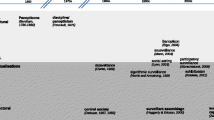Abstract
The research is about the construction of conventional time through the appropriation of different tools used to locate events in time by 200 children between the ages of 4 to 10 years old. Temporal locations are examined through an interview task and the children’s ability to construct order of different temporal frameworks (daily, weekly, yearly) is studied using a card arrangement task. The same children took part in these two tasks.
The results show that the tools children use to locate events in time change with their age and school experience: the youngest use relative locations or scripts (events are used as tools to locate other events) whereas older children use absolute locations (hours, days, months then become tools for locating events in time). Moreover, children use conventional temporal tools to locate events before being able to use them to put different events into the same temporal sequence. The study highlights developmental phases between the use of temporal locations and the construction of their meanings.
Résumé
Notre recherche porte sur 200 enfants âgés de 4 à 10 ans et s’intéresse à la construction du temps conventionnel en référence à l’appropriation de divers outils de localisations temporelles. La capacité à localiser des événements dans le temps est étudiée au cours d’un entretien et la capacité à ordonner des événements entre eux pour reconstruire divers cadres temporels (quotidien, hebdomadaire, et annuel) est étudiée lors d’une tâche d’arrangements d’images. Les mêmes enfants participent à ces deux épreuves. Les résultats montrent que les outils utilisés par l’enfant pour localiser les événements dans le temps changent avec l’expérience scolaire: l’enfant utilise tout d’abord des localisations relatives (des événements lui servent alors de moyens de repères) puis des localisations conventionnelles (les jours, les heures deviennent alors des outils de repérage). De plus, l’enfant utilise des outils de localisations temporelles avant de pouvoir ordonner différents événements d’une même série temporelle. Ces résultats montrent différentes étapes développementales entre l’utilisation de localisations temporelles et la construction de leurs significations.
Similar content being viewed by others
References
Ames, L. (1946). The development of sense of time in the young child.Journal of Genetic Psychology, 68, 97–125.
Attali, J. (1983).Histoires du temps. Paris: Le livre de Poche, Biblio Essais.
Fivush, R. (1984). Learning about school: The development of kindergarteners’ school scripts.Child Development, 55, 1697–1709.
Fraisse, P. (1963).Psychology of time. New york: Harper and Row (first published, 1957).
French, L.A., & Nelson, K. (1981). Temporal knowledge expressed in Preschoolers’ descriptions of familiar activitiesPapers and reports on child language and development, 20, 61–69.
Friedman, W.J. (1978). Development of time concepts in children. In H.W. Reese & L.P. Lipsitt (Eds.)Advances in child development and behavior (vol. 12, pp. 267–298). New York: New York Academic Press.
Friedman, W.J. (1982).The developmental psychology of time. New York: New York Academic Press.
Friedman, W.J. (1986). The development of children’s knowledge of temporal structure.Child Development, 57, 1386–1400.
Friedman, W.J. (1992). Children’s time memory: The development of differenciated past.Cognitive Development, 7, 171–187.
Godard, L., & Labelle, M. (1998) Le développement de la localisation dans le temps chez des enfants de 5 à 9 ans de milieux socio-économiques différents.Année Psychologique, juin 98, 233–270.
Harner, L. (1975). Yesterday and tomorrow: Development of early understanding of the terms.Developmental Psychology, 11, 864–865.
Harner, L., Nelson, K., Korintus, M., Kessler, & Shaw, L. (1992).From bedtime to Eastern standard time. Unpublished manuscript. City University of New York.
Le Goff, J. (1977).Pour un autre Moyen Age. Paris: Gallimard.
Leontiev, A. (1972).Le développement du psychisme. Paris: Editions sociales
Levy, E., & Nelson, K. (1994). Words in discourse: A dialectical approach to the acquisition of requiry and use.Journal of child language, 21, 367–389.
Lucariello, J., Kyrarsis, A., & Nelson, K. (1992). Taxonomic knowledge: What kind and when.Child Development, 63, 978–998.
Nelson, K. (1986).Event knowledge: Structure and function in development. Hillsdale, NJ: Erlbaum.
Nelson, K. (1988). Where do taxonomy come from?Human development, 31, 3–10.
Nelson, K. (1989).Narratives from the crib. Cambridge, MA: Harvard University Press.
Nelson, K. (1991). The matter of time: Interdependencies between language and thought in development. In S.A. Gelman & J.P. Byrnes (Eds.),Perspectives on language and cognition: Interrelations in development. New York: Cambridge University Press.
Nelson, K. (1996).Language in cognitive development. The emergence of the mediated mind. New York: Cambridge University Press.
Piaget, J. (1937).La construction du réel chez l’enfant. Neuchâtel, Paris: Delachaux et Niestlé.
Piaget, J. (1946/1969).The child’s conception of time. London: Routledge & Kegan Paul.
Schank, R.C., & Abelson, R.P. (1977).Scripts, plans, goals and understanding. Hillsdale, NJ: Erlbaum.
Springer, D. (1952). Development in young children of an understanding of time and the clock.Journal of Genetic Psychology, 80, 83–96.
Van Rossum, D. (1997).L’histoire de l’heure. Paris: Maison des Sciences de l’homme.
Vygotsky, L. (1978).Mind in society, the development of higher psychological processes. Cambridge: Harvard University Press.
Vygotsky, L. (1934/1986).Thought and language. Cambridge, MA: MIT Press.
Wallon, H. (1945).Les origines de la pensée chez l’enfant. Paris: Presses Universitaires de France.
Weist, R.M. (1989). Time concepts in language and thought: Filling the Piagetian void from two to five years. In Levin & Zakay (Eds.),Time and human cognition: A life-span perspective (pp. 63–118). Amsterdam: North-Holland.
Whorf, B.L. (1956/1969).Linguistique et Anthropologie. Paris: Denoël.
Author information
Authors and Affiliations
Corresponding author
Rights and permissions
About this article
Cite this article
Tartas, V. The development of systems of conventional time: A study of the appropriation of temporal locations by four-to-ten-year old children. Eur J Psychol Educ 16, 197–208 (2001). https://doi.org/10.1007/BF03173025
Received:
Revised:
Issue Date:
DOI: https://doi.org/10.1007/BF03173025




